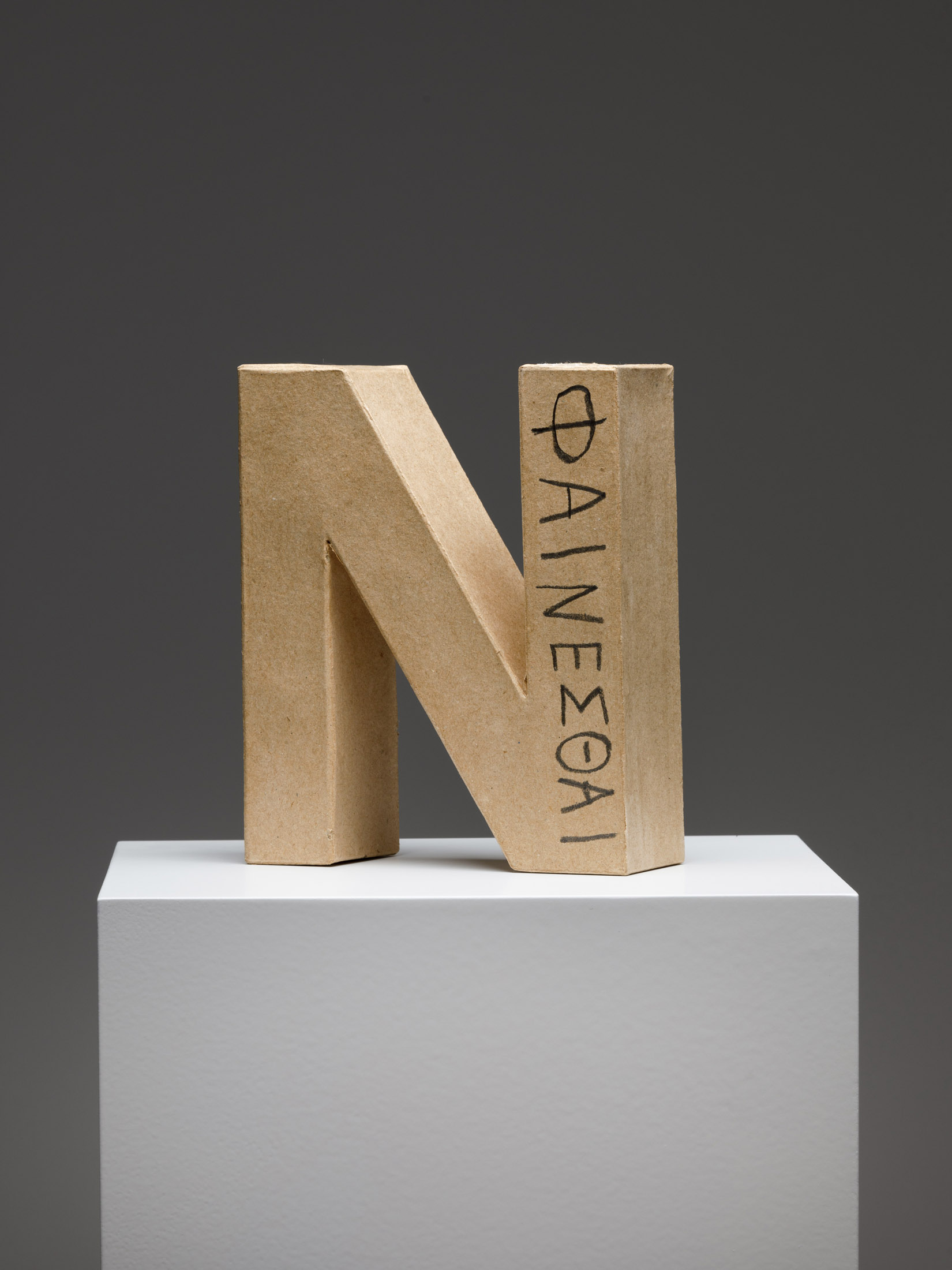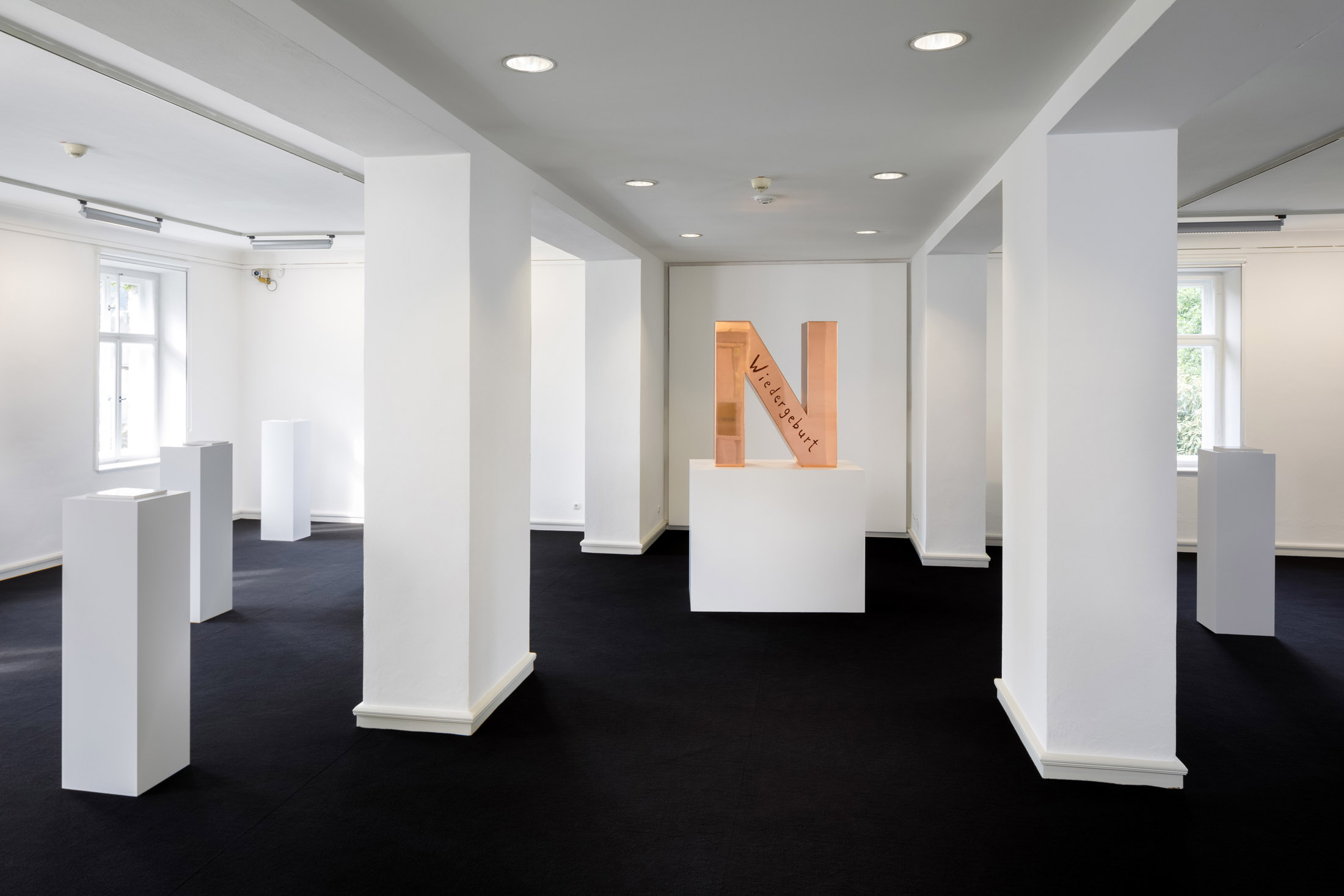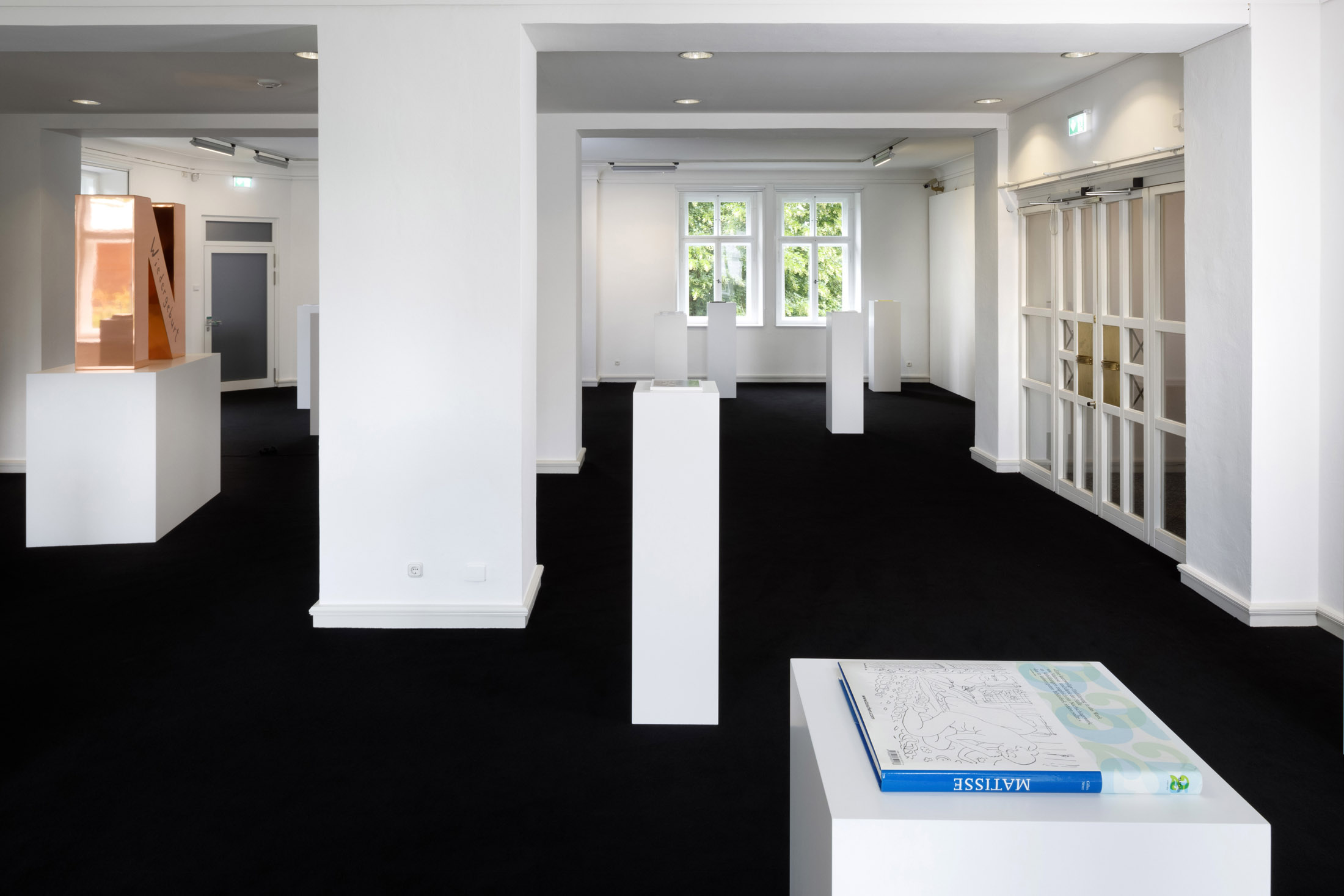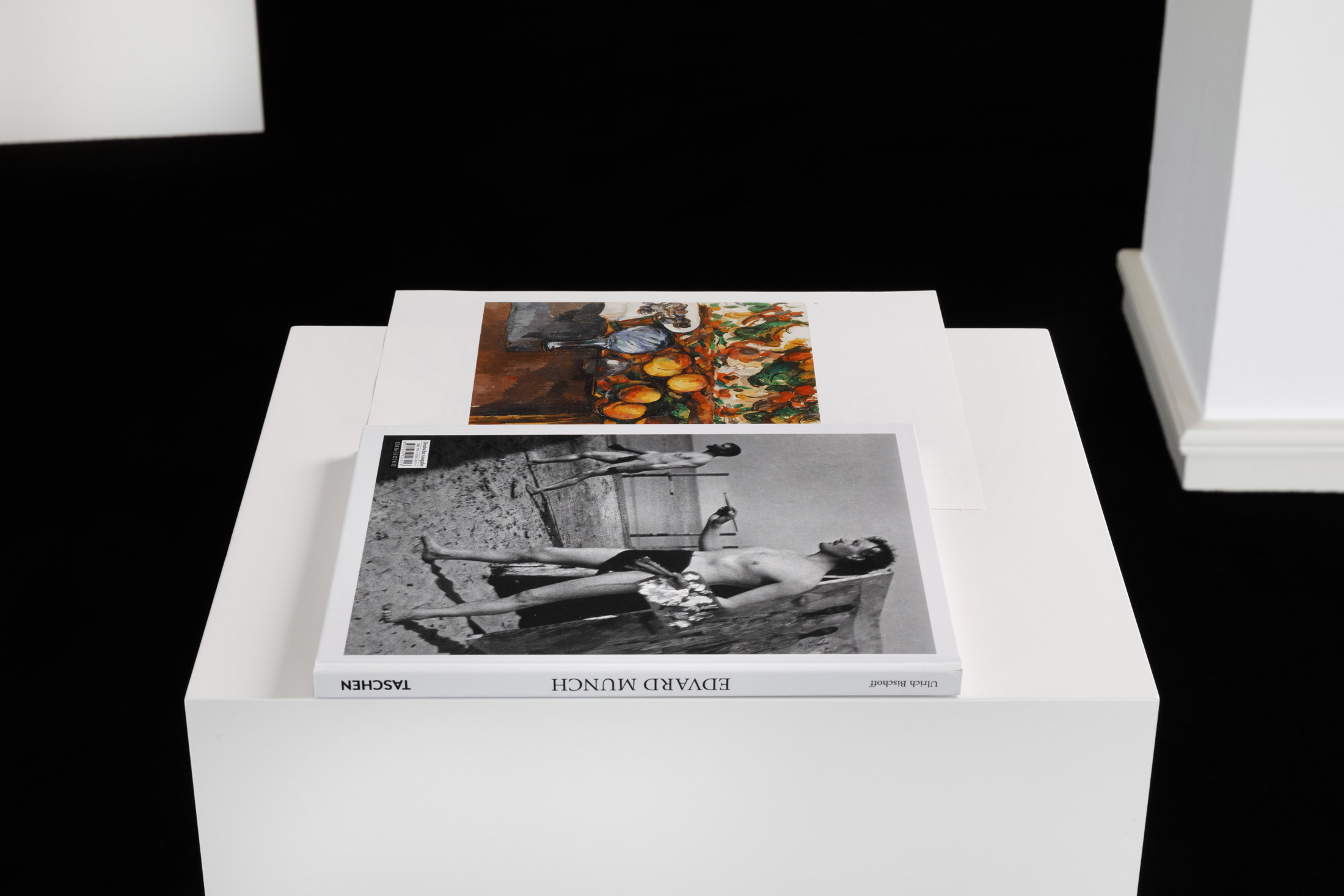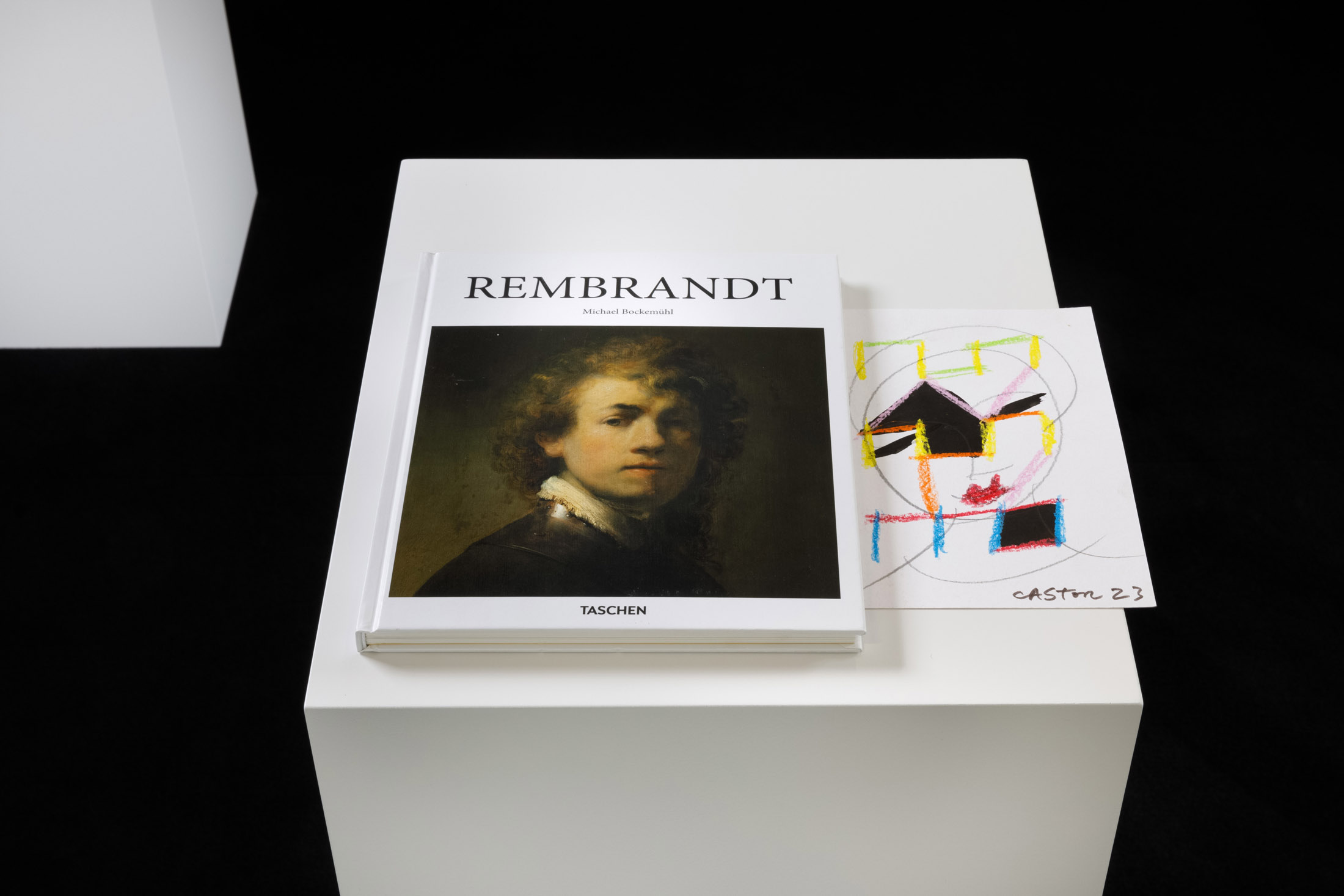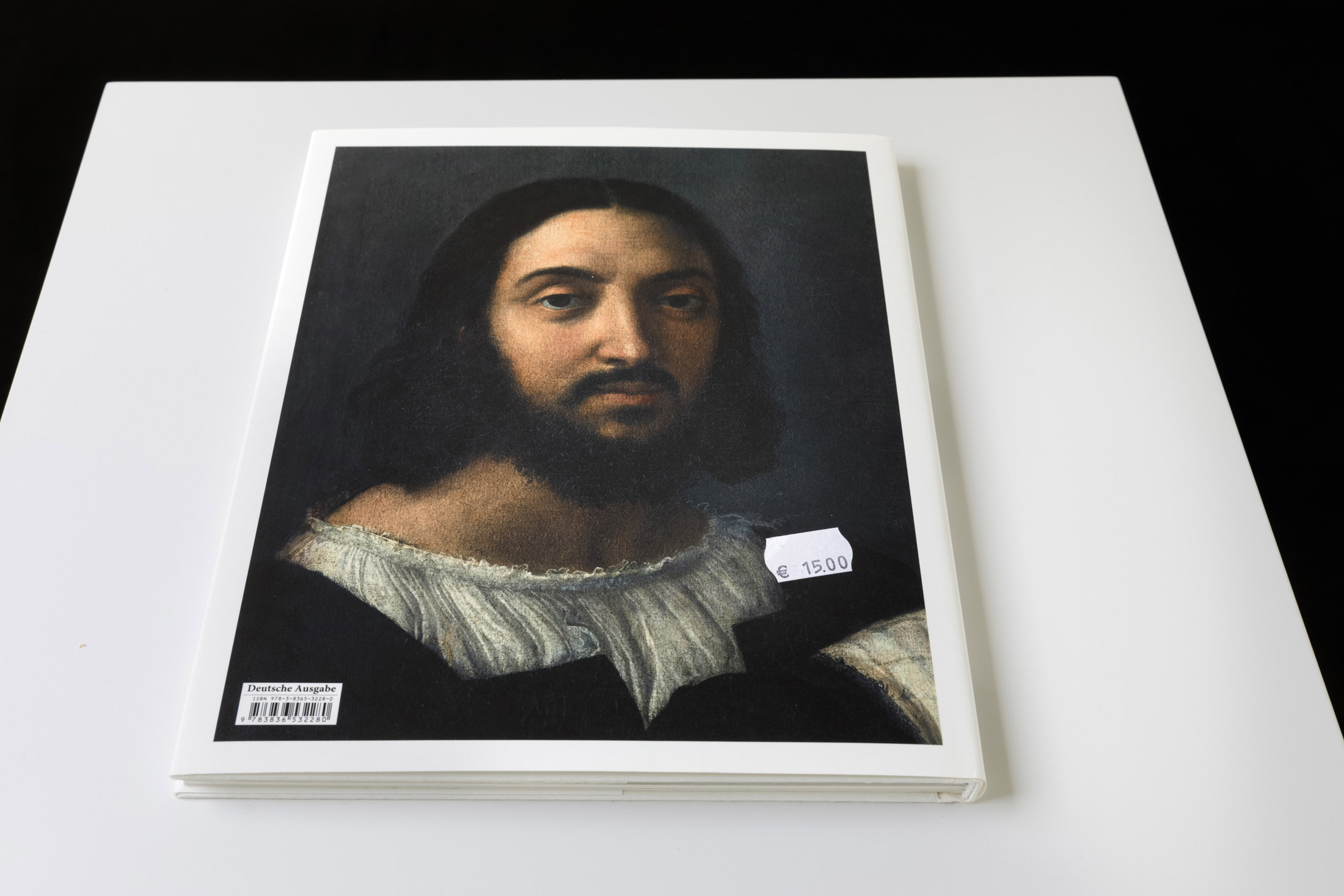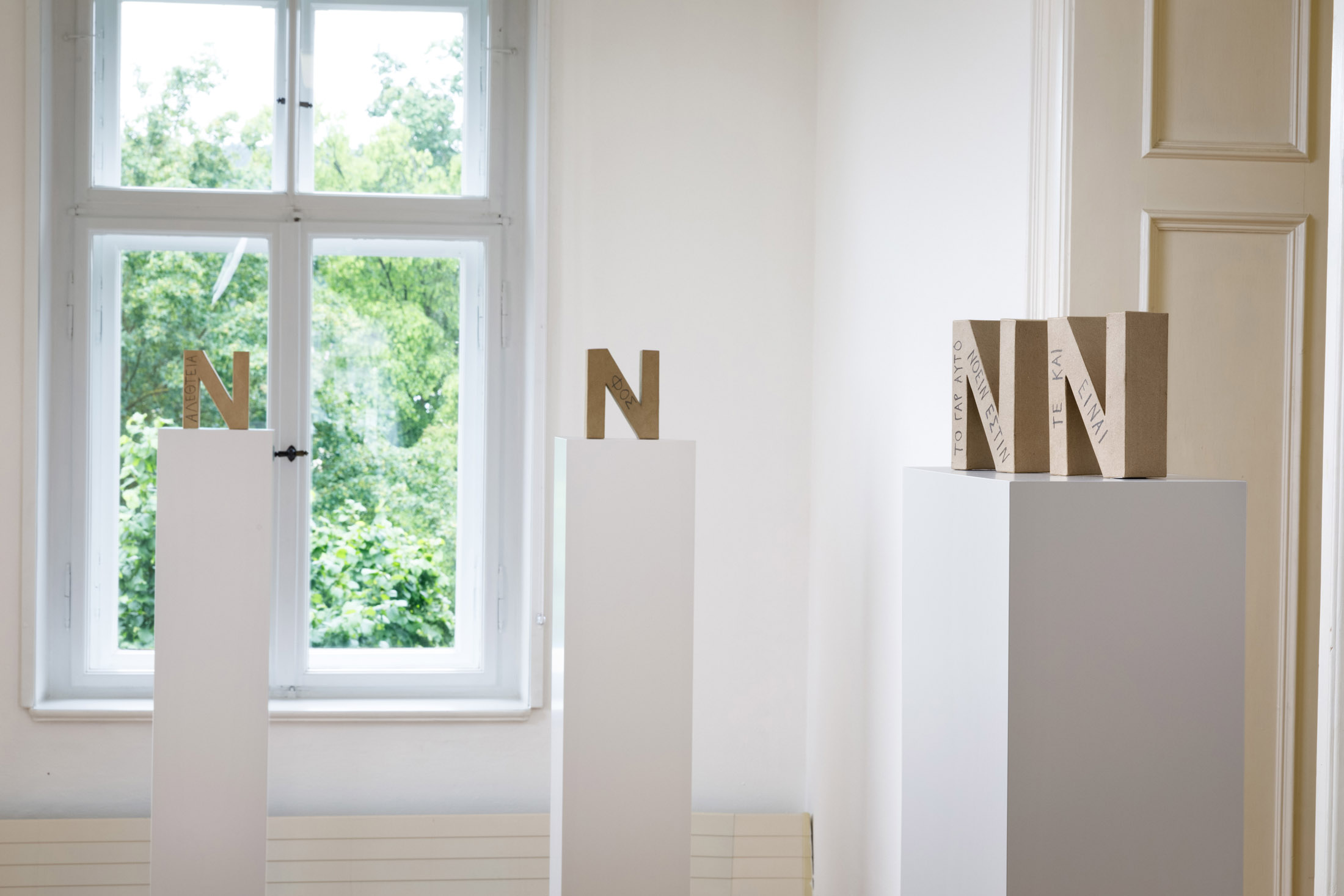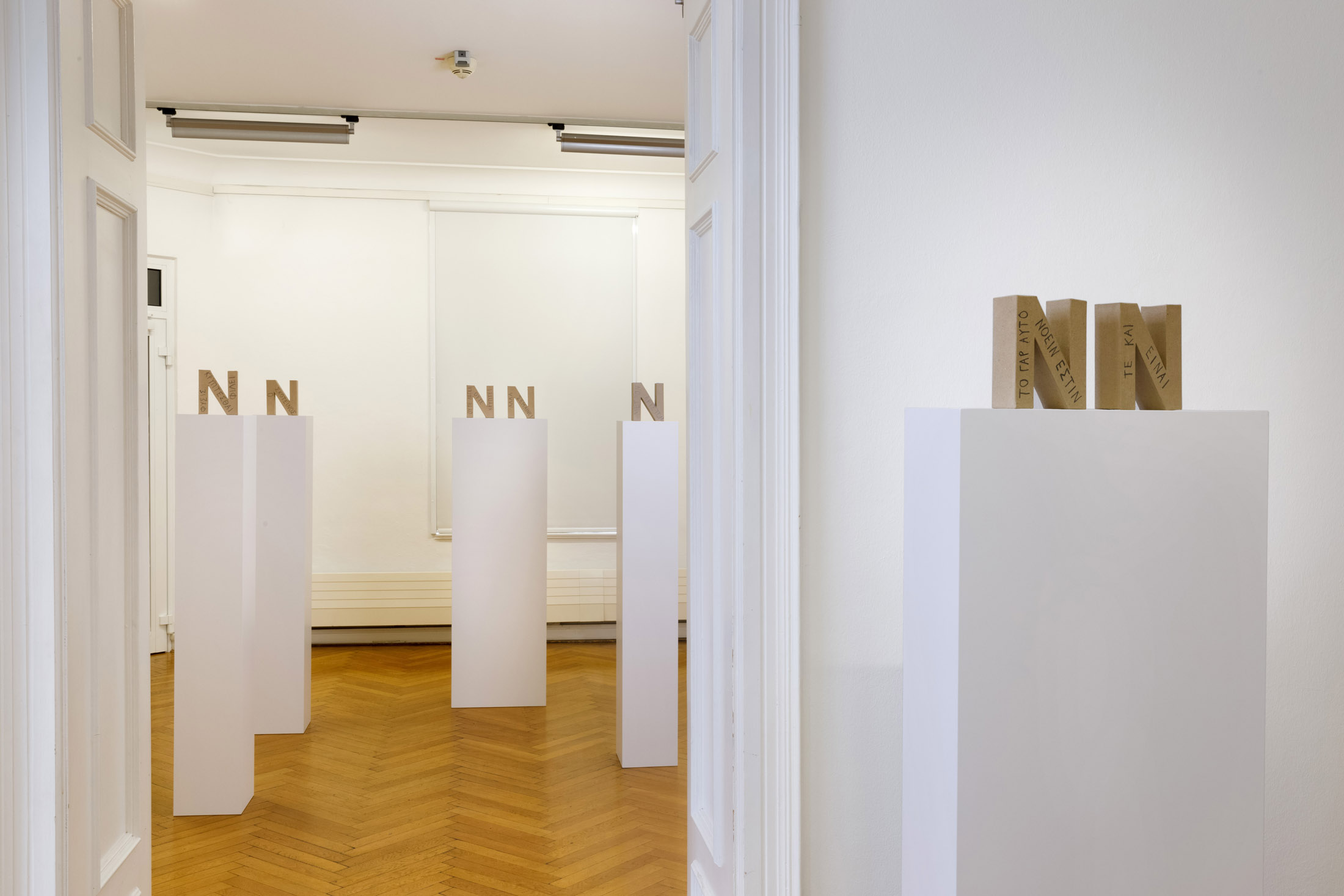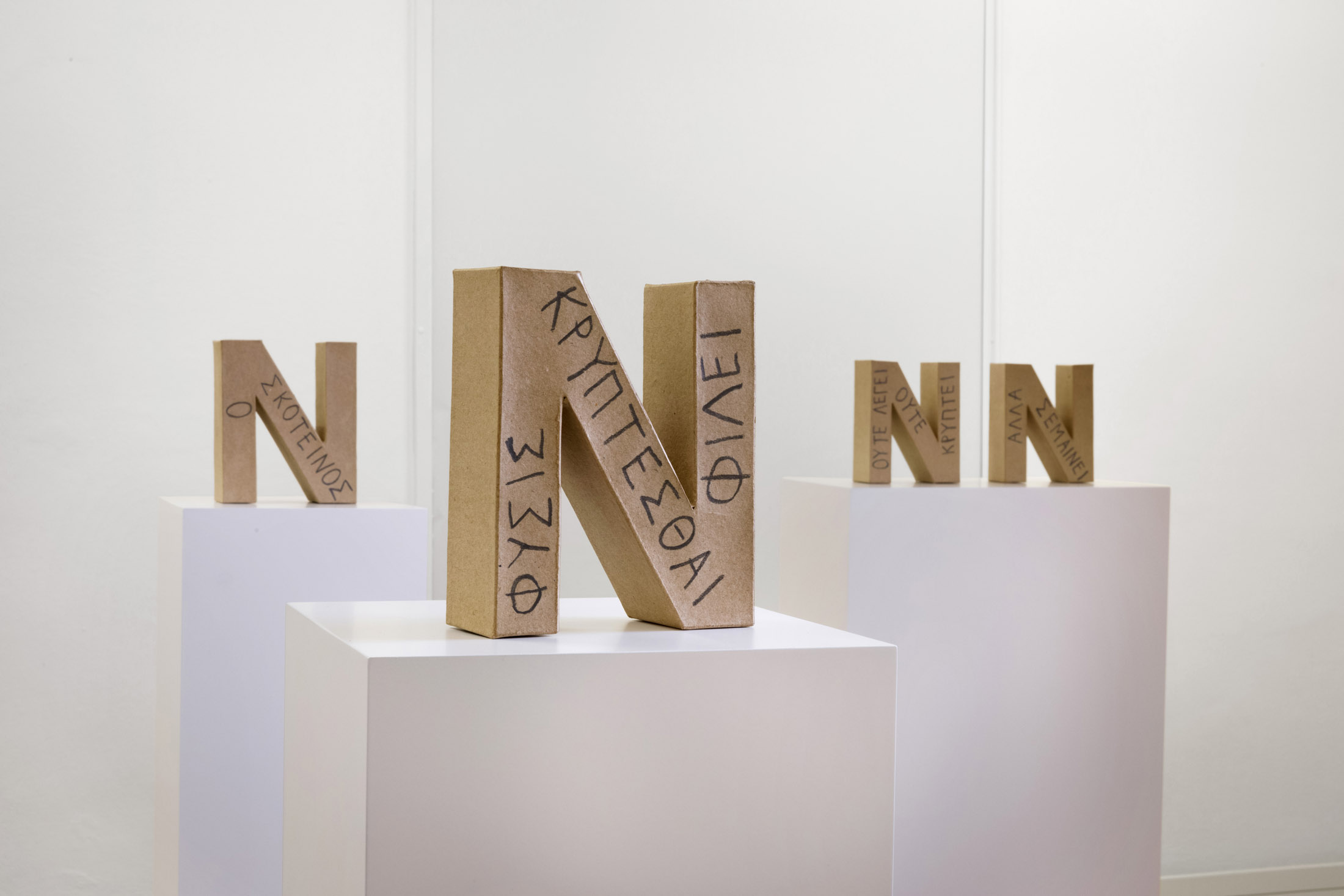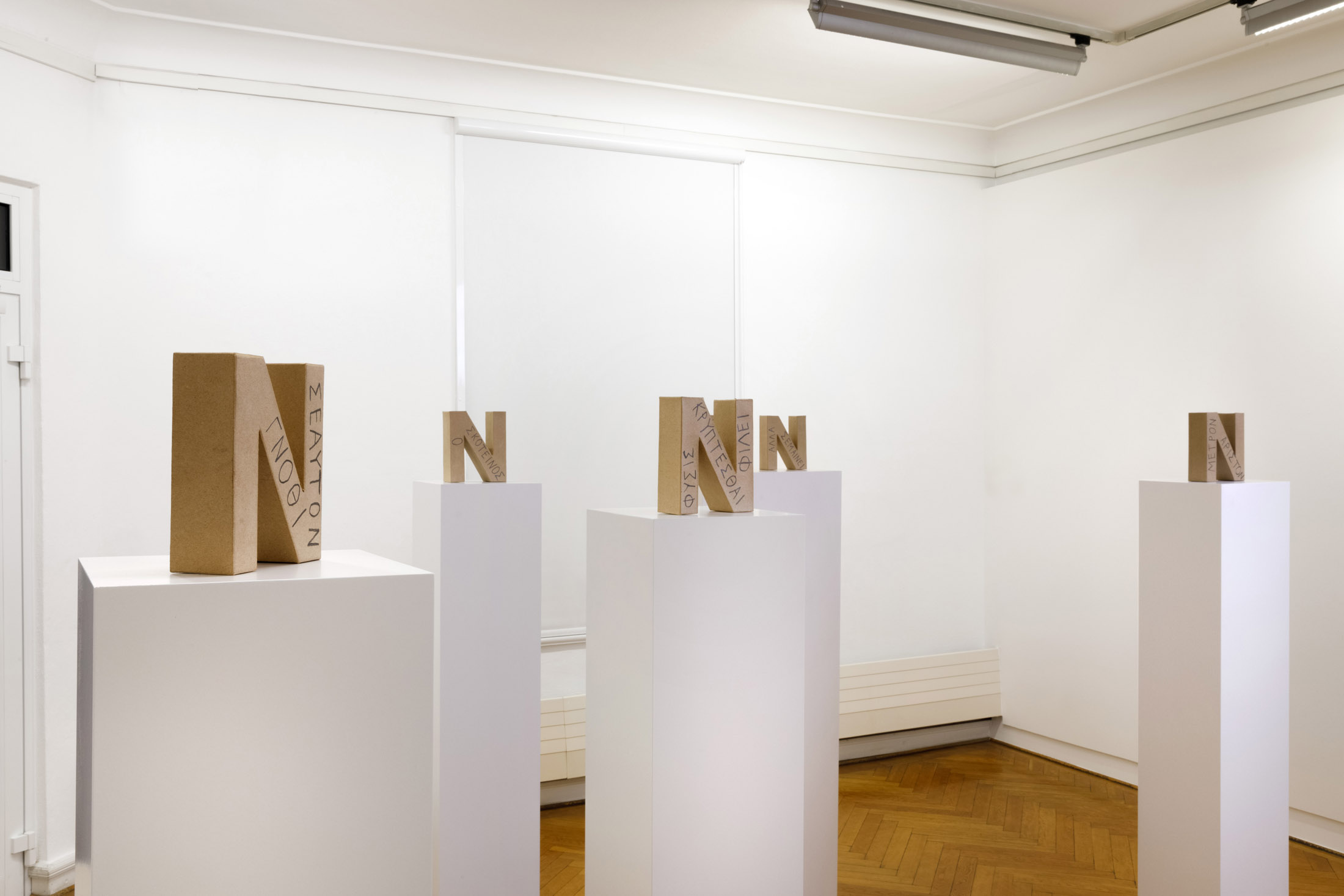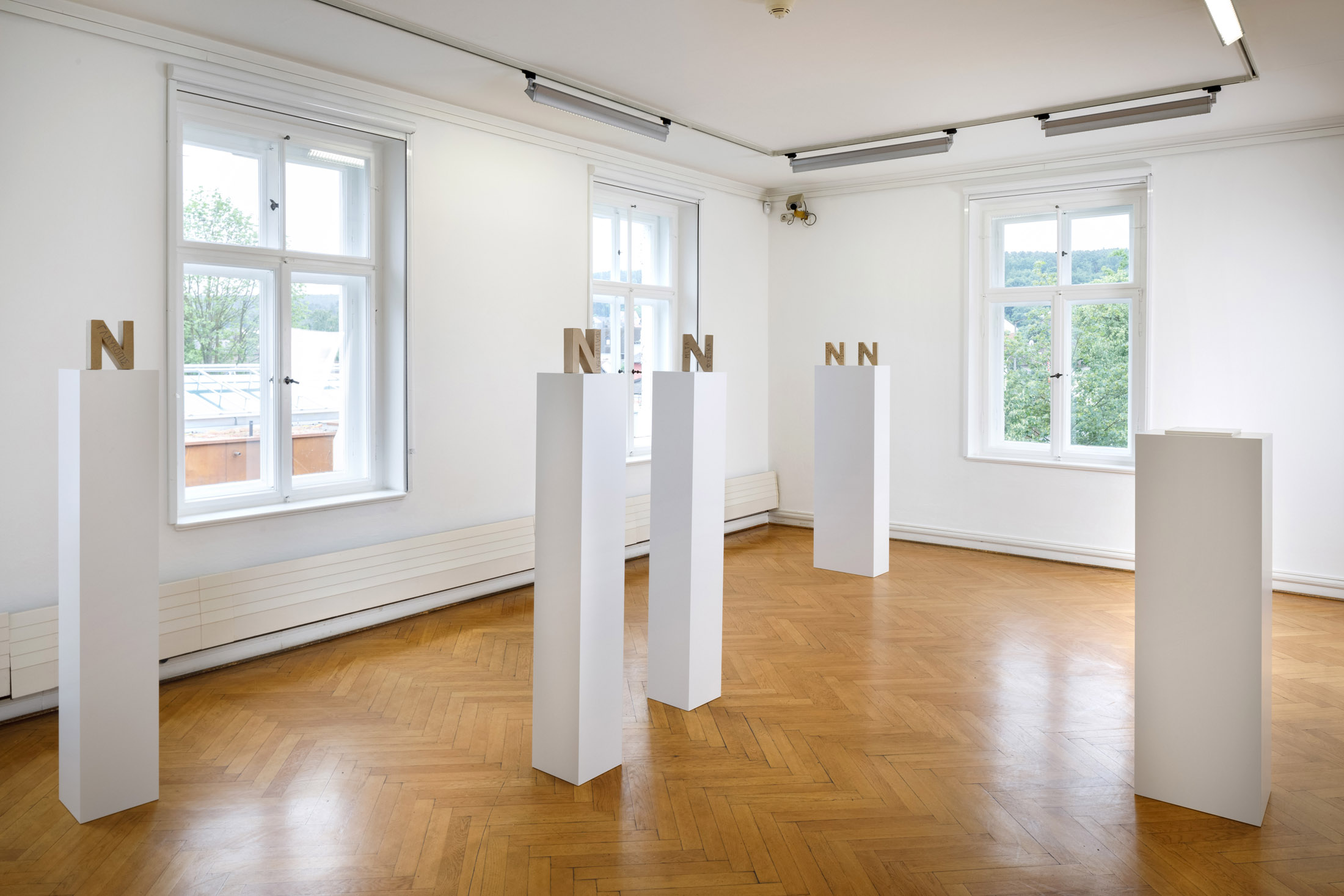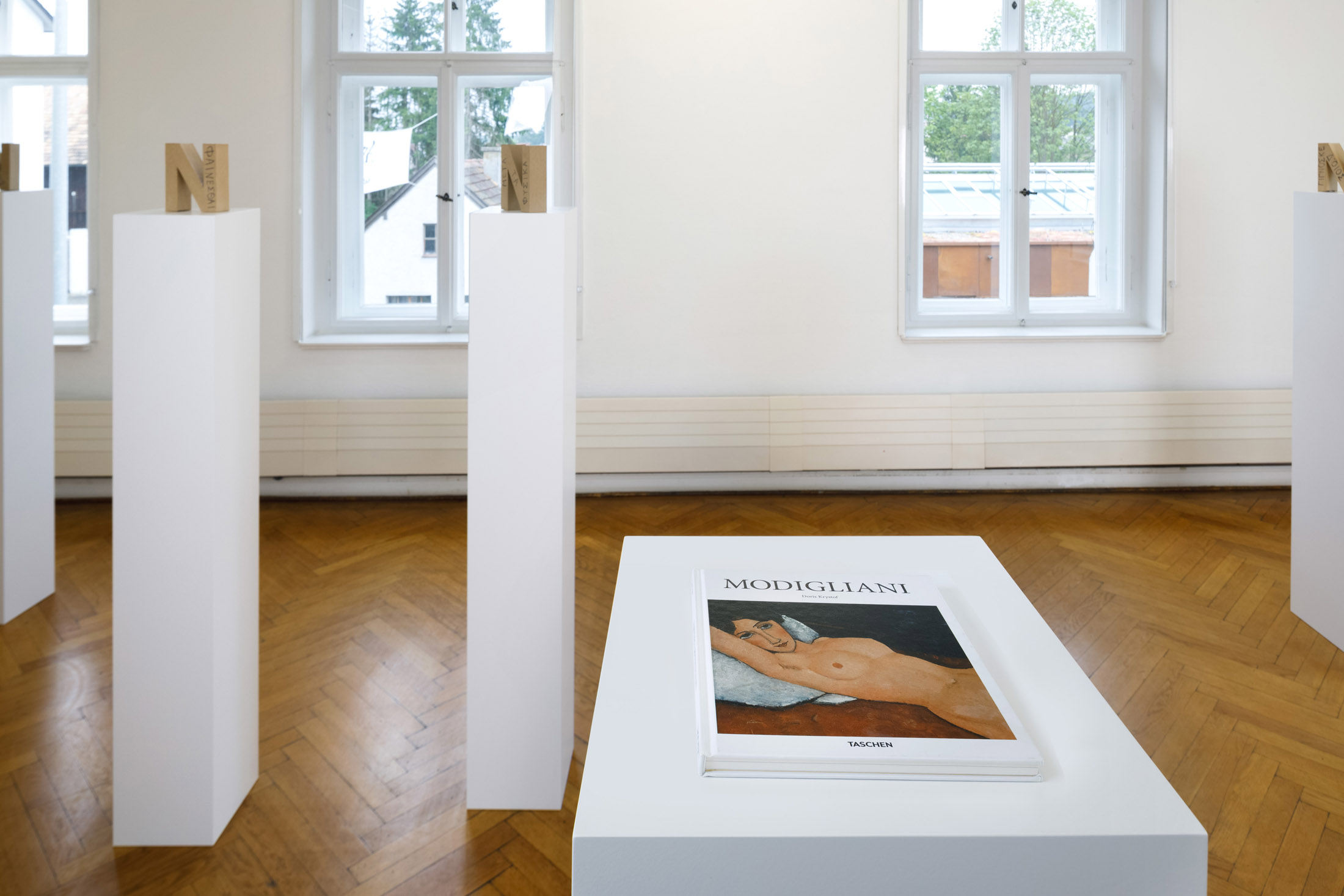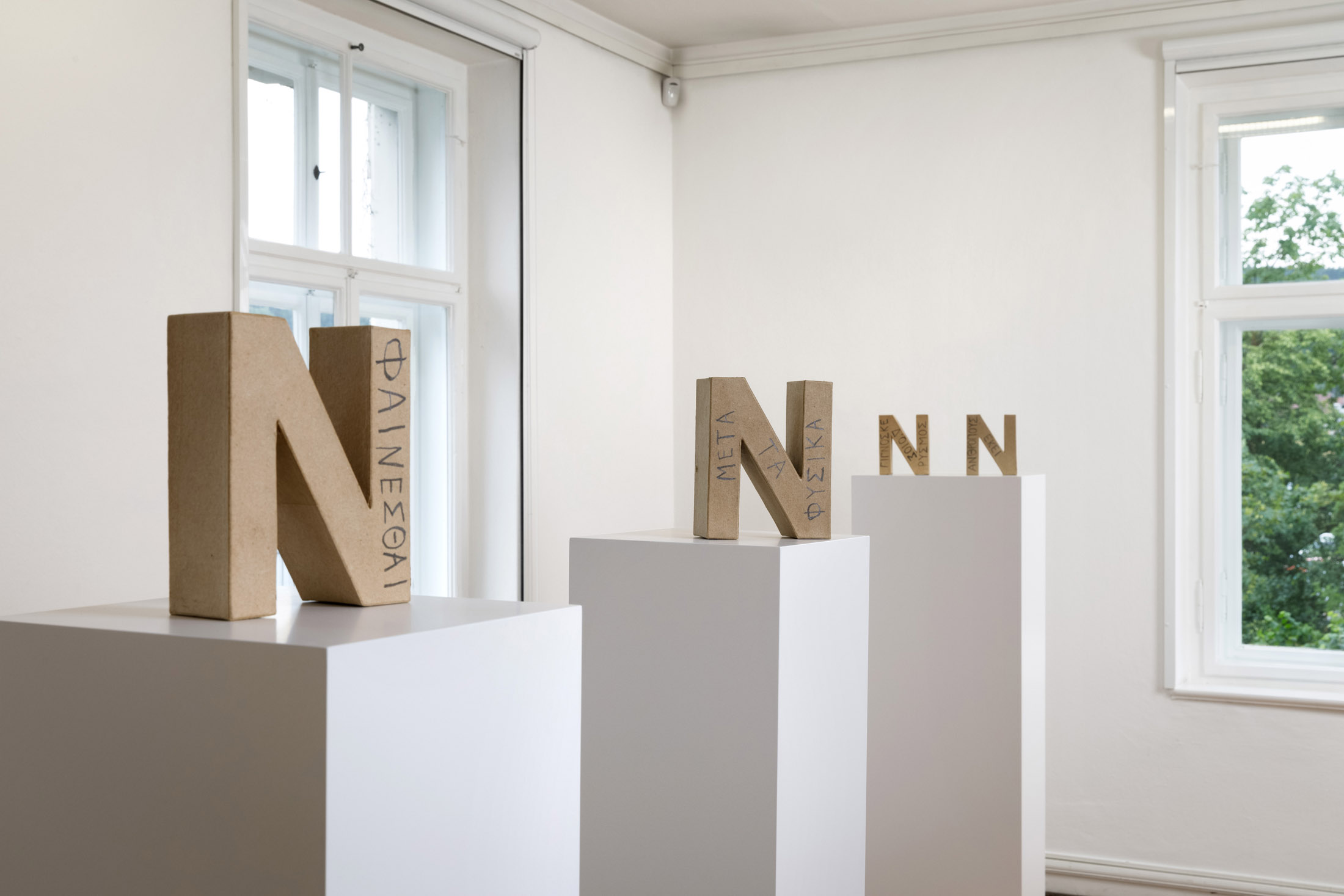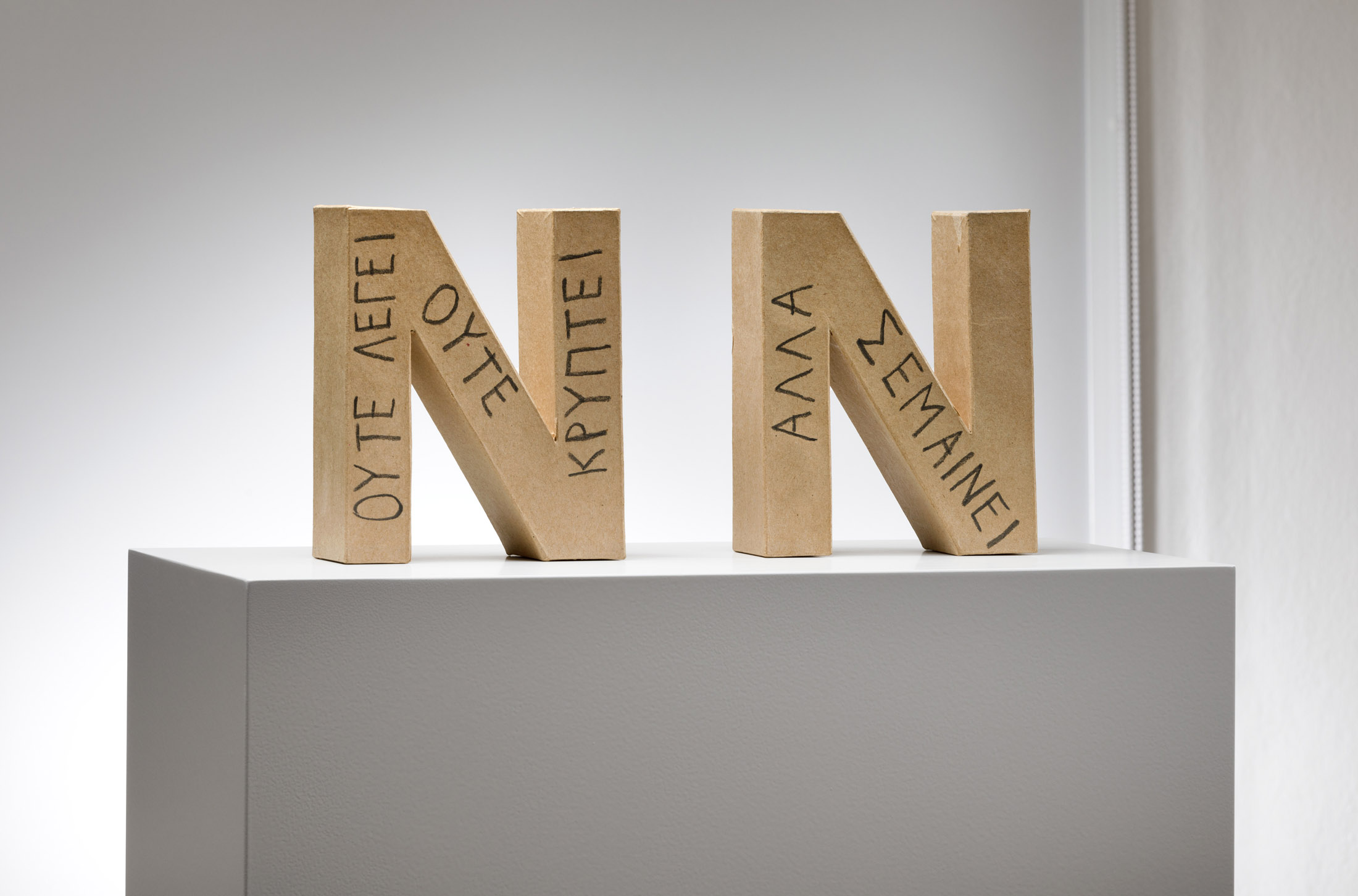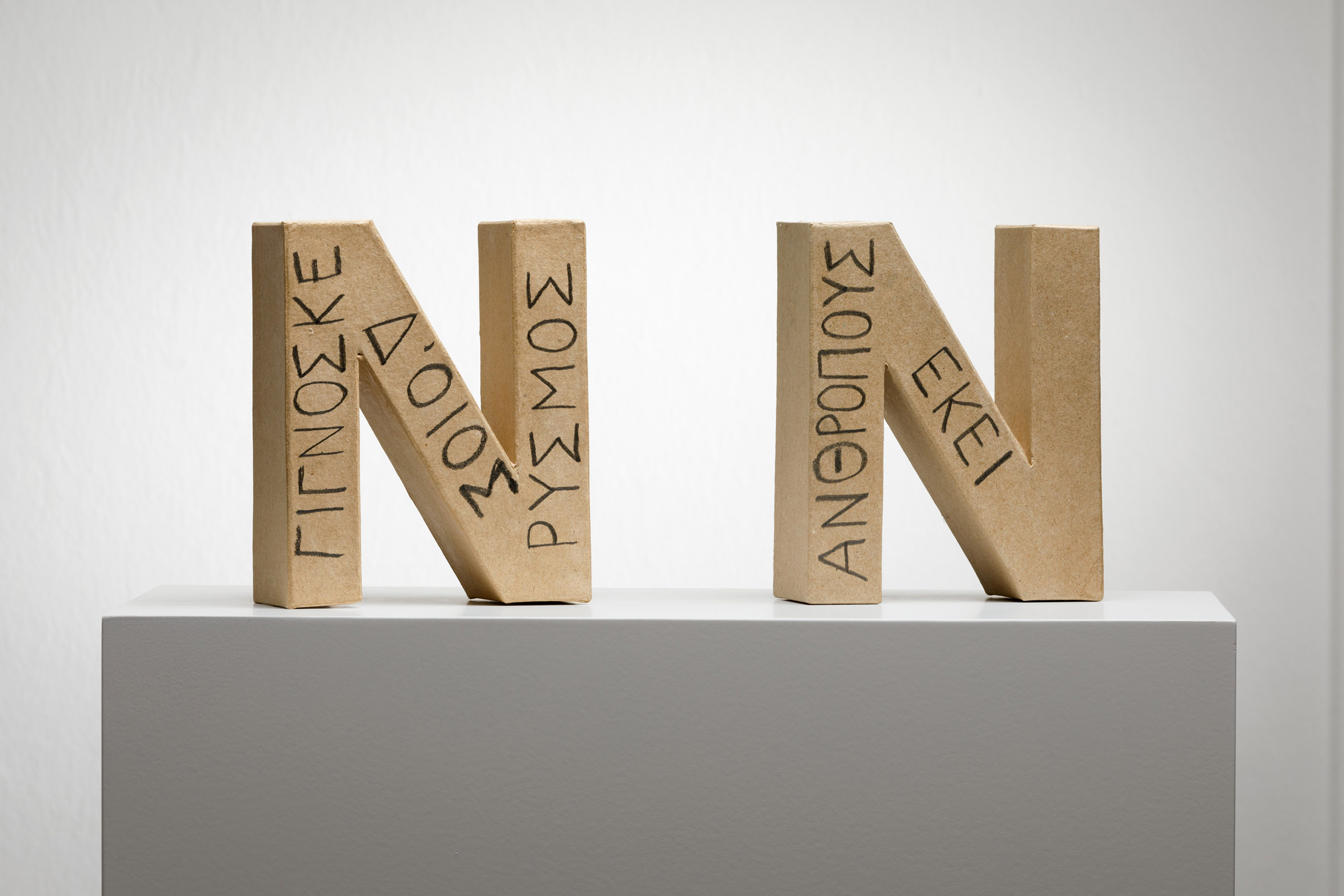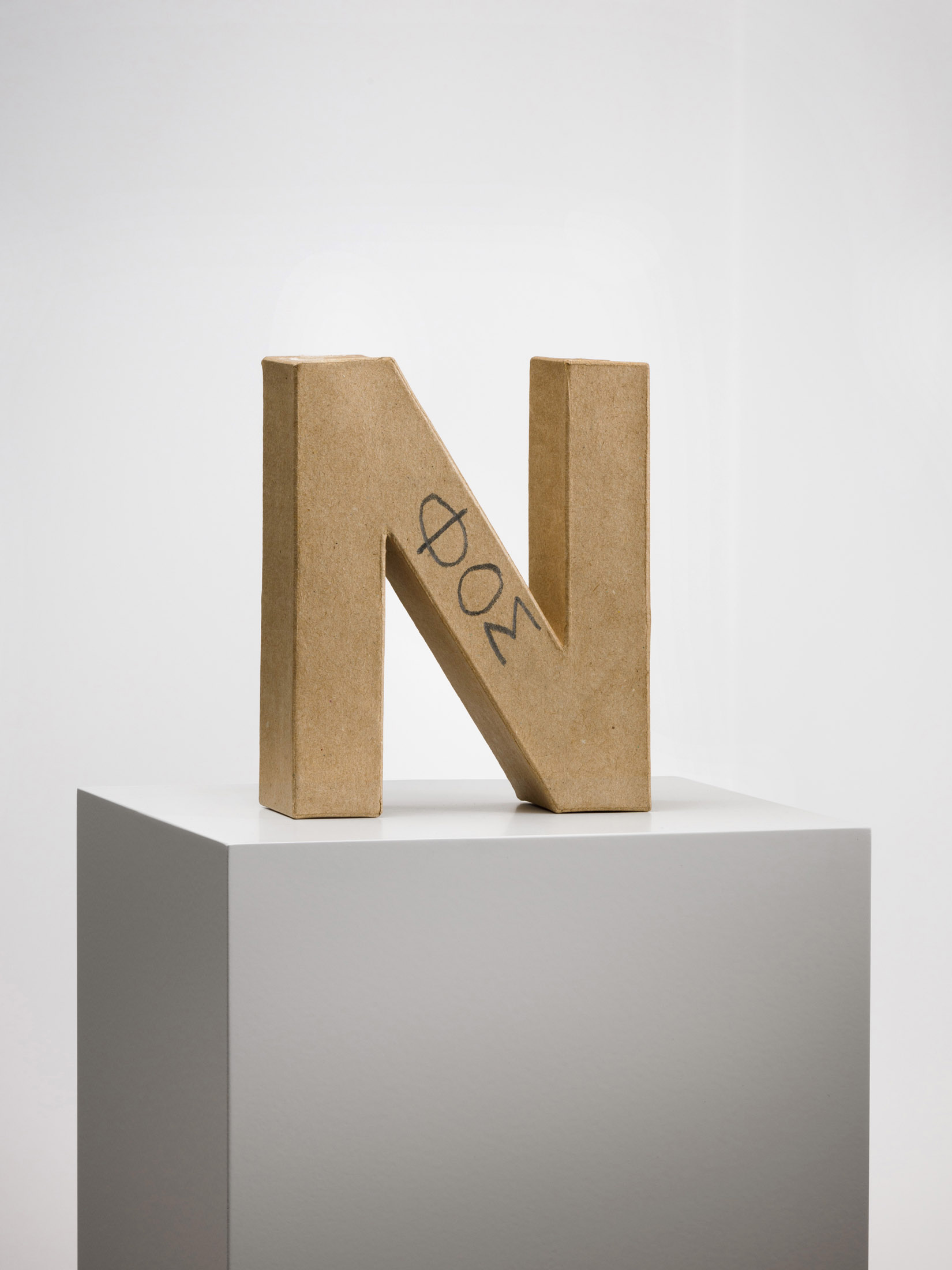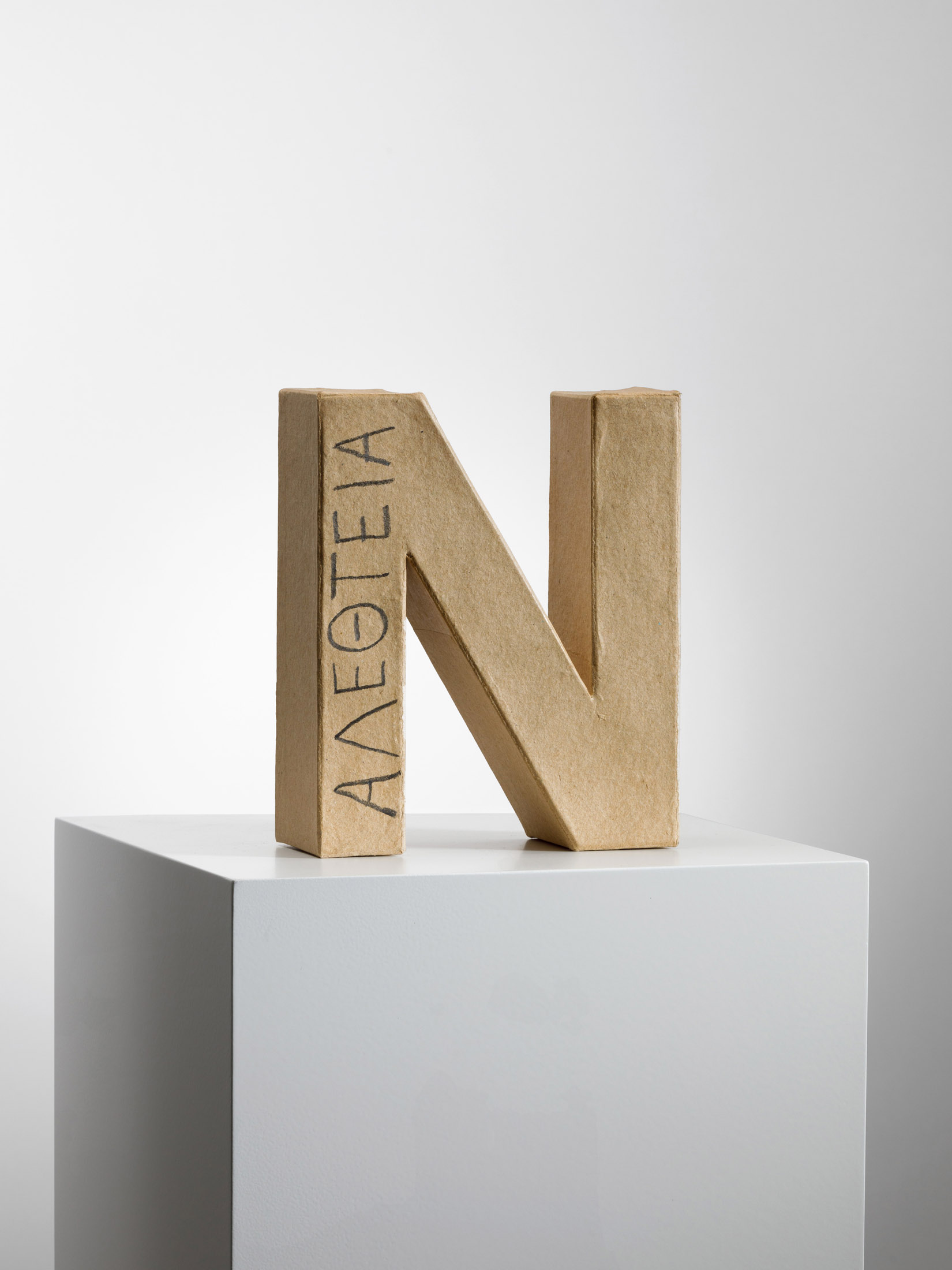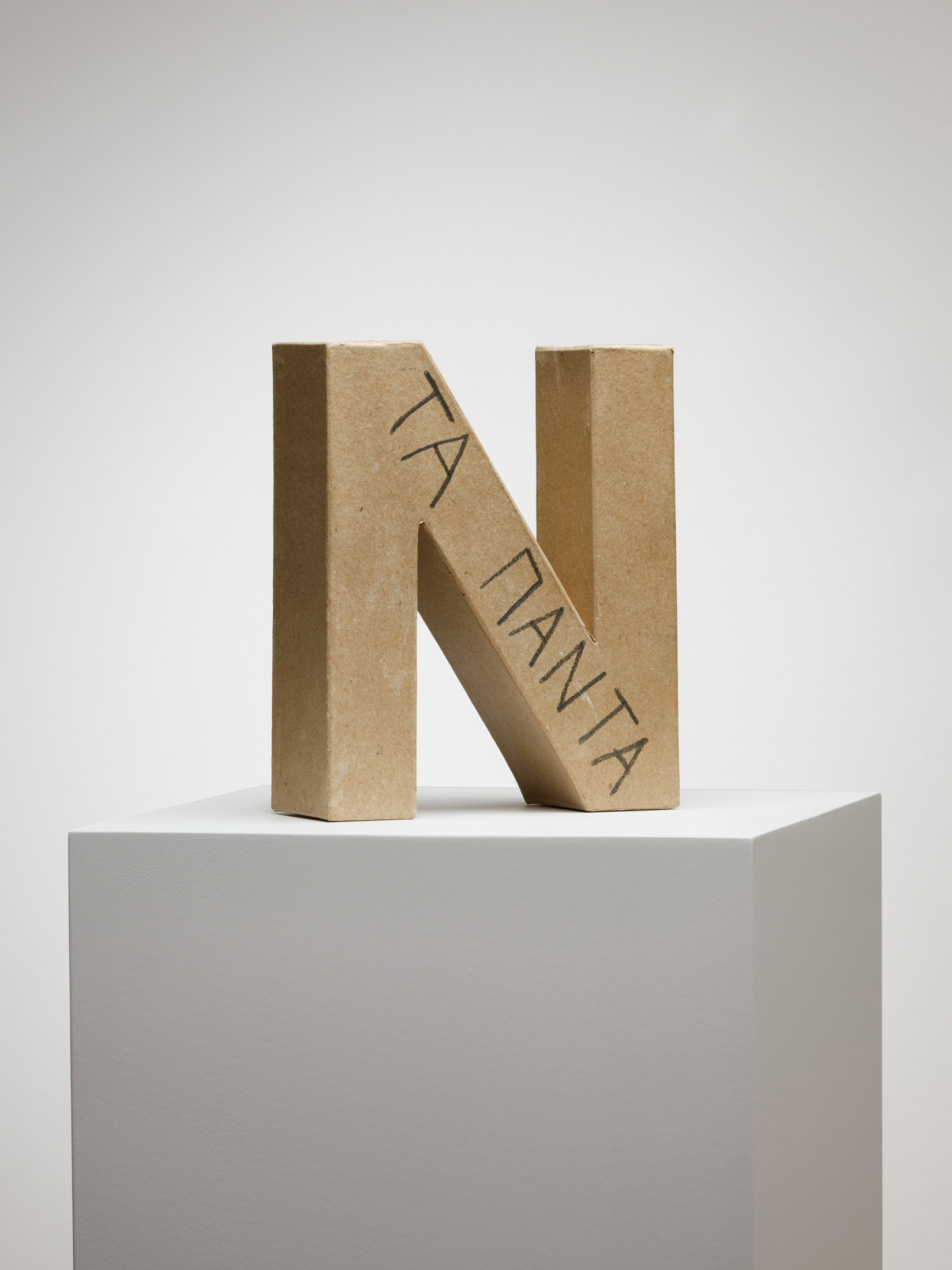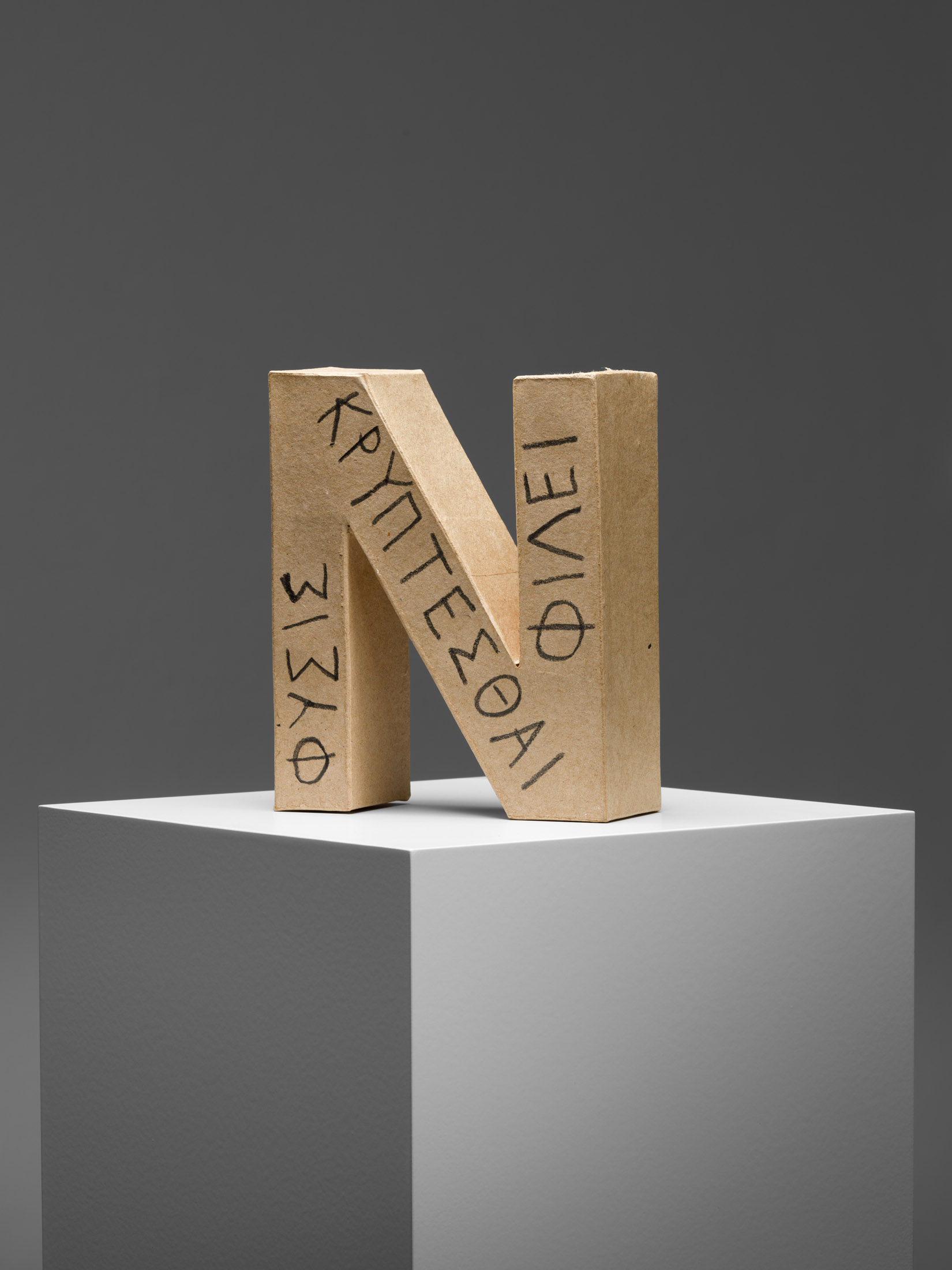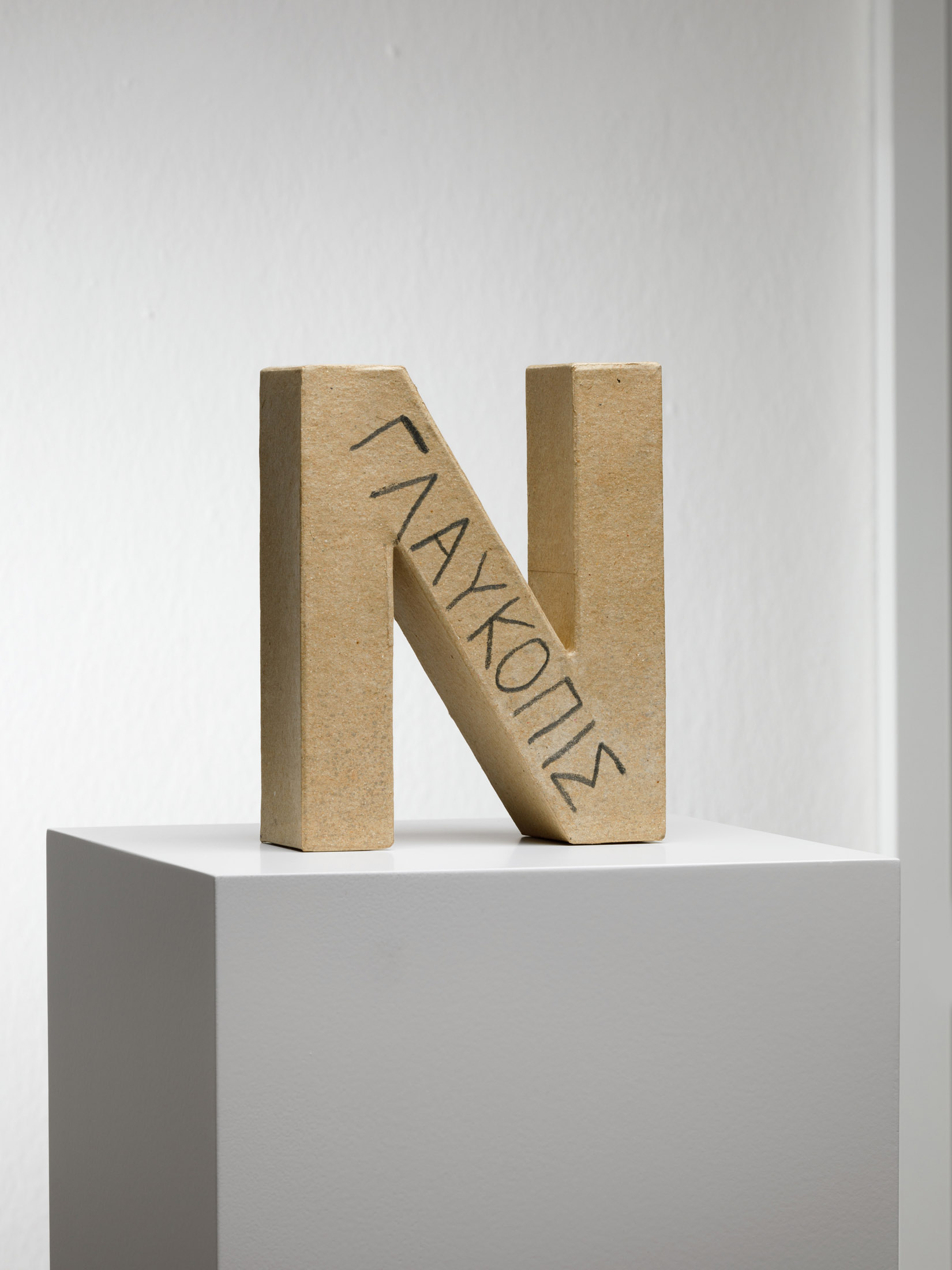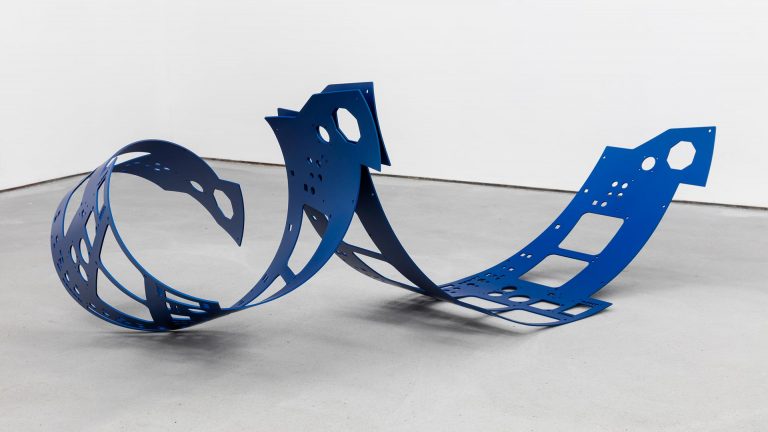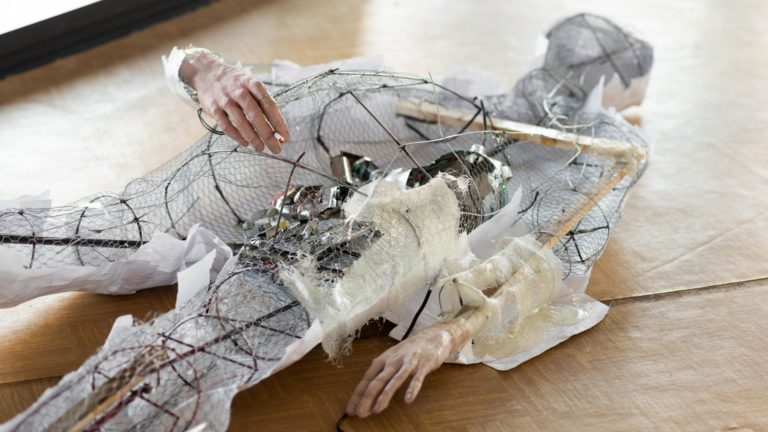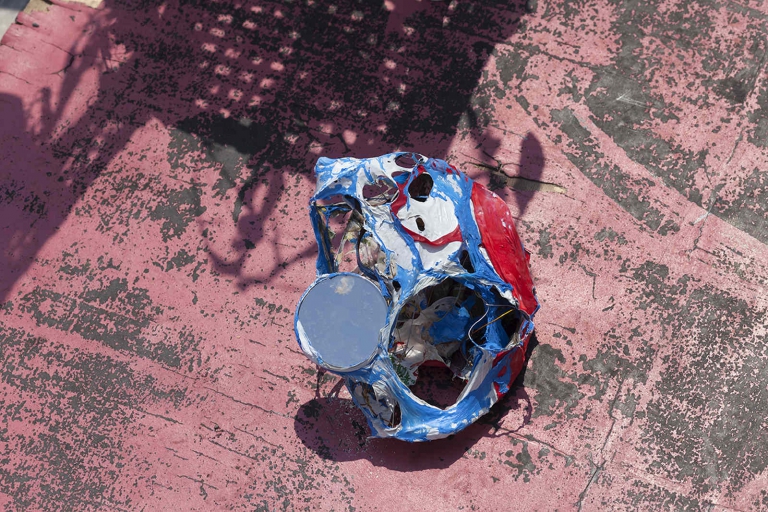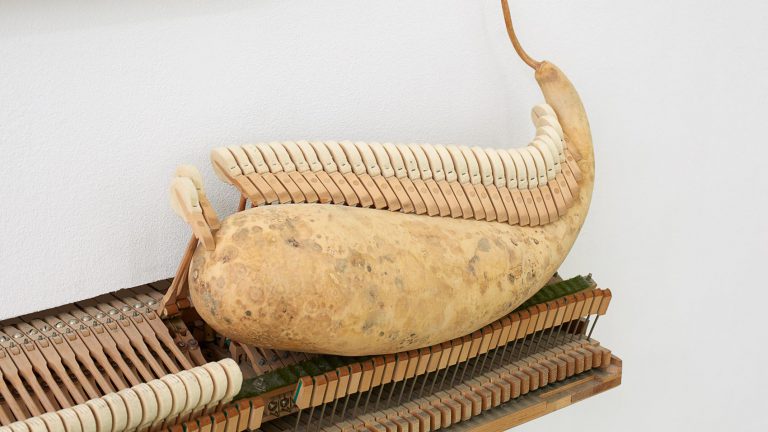Artist: André Butzer
Curated by: Jürgen Dehm
Venue: Kebbel-Villa, Schwandorf, Germany
Date: June 11 – July 23, 2023
Photography: Clemens Mayer / all images copyright and courtesy of the artist and Kebbel-Villa, Schwandorf
Following his first institutional solo exhibition in Bavaria (Bayerisches Armeemuseum Ingolstadt, 2016), the Oberpfälzer Künstlerhaus presents the German painter André Butzer with a very special show. Here, for the first time, the artist completely abandons the use of walls as hanging surfaces for his paintings – as well as the paintings themselves.
Since the late 1990s, Andre Butzer and the “Science Fiction Expressionism” that was invented by him, have had a major impact onthe international painting discourse. His works deal with the extremes of history and the brokenness of human existence as such, locating the individual in a perpetual state between striving for fulfillment and failing. The very name of the cosmic place “NASAHEIM”, which Butzer imagined in 2001, creates tension between opposing poles since “NASA”, the first part of this neologism, refers to something extremely distant, technological, while “HEIM” (German for “home”) connotes closeness, warmth, and humaneness. With NASAHEIM, the artist “expresses a balanced state and designates an ‘untouched’ place where all that has been endured is fulfilled and accomplished in the end. This is what N stands for.” (Christian Malycha in: Sein und Bild. André Butzer 1994-2014. Bielefeld, Berlin 2017, p. 138).
N functions as an artistic measure conceived by Butzer, which is not a calculable, rational quantity, but a recurring, fertile threshold for the pictorial. Thus, N possesses a radicality that affects the artist’s entire creative process and could thus be considered the essence of NASAHEIM.
A large N made from copper is the centerpiece of André Butzer’s exhibition at the Kebbel-Villa. On its front, the artist has written the word WIEDERGEBURT (= “REBIRTH”) with lacquer: On its back, in Greek script: EINAI GAR KAI ENTAUTHA THEOUS (= “here, too, gods are present”). Heraclitus is said to have uttered this word (= statement) to strangers who observed him suspiciously as he warmed himself at the stove. It refers to the fact that even things that may seem insignificant at first glance can hold meaning and greatness.
Around the large copper N, books about artists and art are presented on pedestals. But these books are not meant to be read. Rather, with their inscriptions and due to the way they are presented, they serve as references within the cosmos of art. Many of the artists they deal with – though not all of them – are important to Butzer, his artistic practice, and his sense of self. The Norwegian painter Edvard Munch, in particular, was often referenced by Butzer. He even called his first solo exhibition, at the Esther Freund Gallery in Vienna in 1999, “Ich bin Munch” (I am Munch). With this self-confident statement, however, Butzer did not mean to imply that he was actually the painter Edvard Munch. Rather, he created a tension by locating his own paintings within Munch’s legacy, while at the same time revealing the potential for the further development of his own pictorial language and his own self. Not only is the past to be made present, but it should also serve as a glimpse into the future. The existential human themes of birth, death, love, longing, hope, and despair were the subjects Munch dedicated himself to, and they interest But-zer, too. References to Munch’s work, for example to his iconic painting “The Scream”, also appear in Butzer’s paintings from recent years through the “Schandemann” (Man of Shame) turned “Wanderer.” The back cover of the publication on Edvard Munch in the exhibition at the Kebbel-Villa, however, shows a photograph of the painter at the Baltic seaside resort of Warnemünde, where he was recovering from an existential crisis between May 1907 and October 1908. Yet it was also during this period on the periphery that he experienced eighteen months of great artistic productivity.
The central theme of André Butzer’s exhibition at the Kebbel Villa is his intellectual frame of reference. The spectrum that is revealed on the ground floor is further developed on the first floor. Here, Butzer has written early Greek words or phrases from the beginning of human thought and being in graphite on the smaller cardboard variants, the proportions of which correspond to the copper N. In the future, they may also manifest themselves in copper and lacquer, as is the case on the ground floor.
The exhibition at the Kebbel Villa is taking place on occasion of André Butzer’s 50th birthday. It is the counterpart to his major retrospective at the Museo Thyssen-Bornemisza in Madrid, which is taking place at the same time. It reveals the intellectual and philosophical cosmos from which the large, colorful paintings shown in Spain originate.
André Butzer was born in Stuttgart in 1973 and lives in Berlin-Wannsee.
Solo exhibitions of his work have been shown at international institutions, including the Museo Thyssen-Bornemisza, Madrid, the Miettinen Collection, Berlin, and the Kunstverein Friedrichshafen (all in 2023); the Friedrichs Foundation, Weidingen (2022); the YUZ Museum, Shanghai, and Museum of the Light, Hokuto (both in 2020); the IKOB Musée d’Art Contemporain, Eupen (2018); the Växjö Konsthall, Växjö (2017); the Bayerische Armeemuseum, Ingolstadt and the Neue Galerie Gladbeck (both 2016); the Kunstverein Reutlingen (2015); the Künstlerhaus – Halle für Kunst und Me-dien, Graz (2014); the Kestner Gesellschaft, Hannover, and the Kunsthistorisches Museum / Theseustempel, Vienna (both 2011); the Kunsthalle Nürnberg (2009); the Kunstverein Ulm (2005) and the Kunstverein Heilbronn (2004).
Works by André Butzer are in the collections of major museums, including the Aurora Museum, Shanghai; the Art Institute of Chicago; the Carré d’Art, Nîmes; the Children’s Museum of the Arts, New York; the Deichtorhallen Ham-burg; the University of Washington, Seattle; the Friedrichs Foundation, Weidingen / Bonn; the Hall Art Foundation, Reading / VT | Derneburg; the Hölderlinturm Tübingen; the IKOB Musée d’Art Contemporain, Eupen; the Kupfer-stichkabinett, Berlin; the LACMA Los Angeles County Museum of Art, Los Angeles; the Marciano Art Collection, Los Angeles; the MARe Museum, Bucharest; the MOCA Museum of Contemporary Art, Los Angeles; the Museo Nacional Thyssen-Bornemisza, Madrid; the Museo Novecento, Florence; the Nationalgalerie / Hamburger Bahnhof – Museum für Gegenwart, Berlin; the Paula Modersohn-Becker Museum, Bremen; the Pinakothek der Moderne, Munich; the Rubell Museum, Miami; the Federal Collection of Contemporary Art, Bonn; and the YUZ Museum, Shanghai.
André Butzer, installation view 2023, Kebbel-Villa, Schwandorf
André Butzer, installation view 2023, Kebbel-Villa, Schwandorf
André Butzer, installation view 2023, Kebbel-Villa, Schwandorf
André Butzer, Wiedergeburt (Reincarnation) / EINAI GAR KAI ENTAUTHA THEOUS (here, too, gods are present), frontside, installation view 2023, Kebbel-Villa, Schwandorf
André Butzer, Wiedergeburt (Reincarnation) / EINAI GAR KAI ENTAUTHA THEOUS (here, too, gods are present), frontside, installation view 2023, Kebbel-Villa, Schwandorf
André Butzer, installation view 2023, Kebbel-Villa, Schwandorf
André Butzer, book about Edvard Munch from Taschen and a copy of Paul Cézanne’s still life with peaches, carafe and statue, installation view 2023, Kebbel-Villa, Schwandorf
André Butzer, books about Edvard Munch, Raffael and Tizian from Taschen and a street artist’s drawing bought by André Butzer in Madrid, installation view 2023, Kebbel-Villa, Schwandorf
André Butzer, book about Rembrandt from Taschen and a street artist’s drawing bought by André Butzer in Madrid, installation view 2023, Kebbel-Villa, Schwandorf
André Butzer, book about Raffael, installation view 2023, Kebbel-Villa, Schwandorf
André Butzer, installation view 2023, Kebbel-Villa, Schwandorf
André Butzer, installation view 2023, Kebbel-Villa, Schwandorf
André Butzer, installation view 2023, Kebbel-Villa, Schwandorf
André Butzer, installation view 2023, Kebbel-Villa, Schwandorf
André Butzer, installation view 2023, Kebbel-Villa, Schwandorf
André Butzer, installation view 2023, Kebbel-Villa, Schwandorf
André Butzer, installation view 2023, Kebbel-Villa, Schwandorf
André Butzer, installation view 2023, Kebbel-Villa, Schwandorf
André Butzer, Untitled (TO GAR AUTO NOEIN ESTIN TE KAI EINAI / because the same is thinking and being), 2022, installation view 2023, Kebbel-Villa, Schwandorf
André Butzer, Untitled (OUTE LEGEI, OUTE KRYPTEI, ALLA SEMAINEI / nothing he says, nothing he hides, but he shows), 2022, installation view 2023, Kebbel-Villa, Schwandorf
André Butzer, Untitled (GIGNOSKE D’OIOS RYSMOS ANTHROPOUS EKEI / Consider what structure makes people docile), 2022, installation view 2023, Kebbel-Villa, Schwandorf
André Butzer, Untitled (PHOS / light), 2022, installation view 2023, Kebbel-Villa, Schwandorf
André Butzer, Untitled (ALETHEIA / unconcealment), 2022, installation view 2023, Kebbel-Villa, Schwandorf
André Butzer, Untitled (METRON ARISTON / Measure is bestness), 2022, installation view 2023, Kebbel-Villa, Schwandorf
André Butzer, Untitled (TA PANTHA / the Whole), 2022, installation view 2023, Kebbel-Villa, Schwandorf
André Butzer, Untitled (O SKOTEINOS / the Dark), 2022, installation view 2023, Kebbel-Villa, Schwandorf
André Butzer, Untitled (PHYSIS KRYPTESTHAI PHILEI / the essence of things likes to hide), 2022, installation view 2023, Kebbel-Villa, Schwandorf
André Butzer, Untitled (GNOTHI SEAUTON / Recognize yourself as a mortal), 2022, installation view 2023, Kebbel-Villa, Schwandorf
André Butzer, Untitled (PHAINESTHAI / to show yourself from yourself), 2022, installation view 2023, Kebbel-Villa, Schwandorf
André Butzer, Untitled (GLAUKOPIS / the Owl-eyed), 2022, installation view 2023, Kebbel-Villa, Schwandorf
André Butzer, installation view 2023, Kebbel-Villa, Schwandorf

